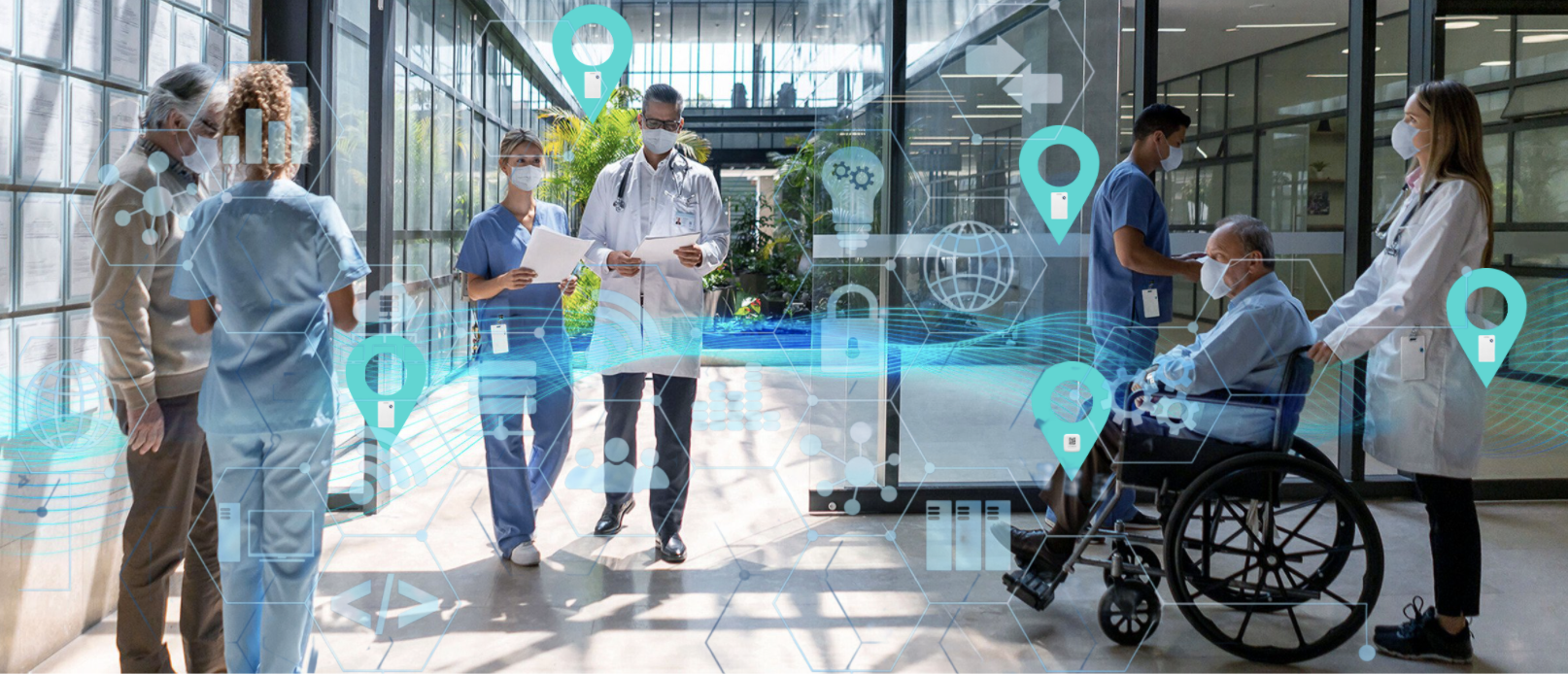🧠 The Digital Spine of the Smart Hospital: RTLS as the Invisible Infrastructure
Hospitals are rapidly adopting robotics, AI, and advanced imaging; yet the most transformative technology might be the one you can’t even see: Real-Time Location Services (RTLS). Like a spine supporting every movement of the body, RTLS is becoming the digital backbone of smart hospitals—driving efficiency, safety, and coordination behind the scenes.
🏥 RTLS: The Hidden Engine Powering Smarter Hospitals
RTLS is often mistaken for a simple “tracking tool.” Yes, it tells you where things are—patients, staff, beds, infusion pumps—but the real magic lies in what it allows hospitals to do once they have that real-time visibility.
By embedding RTLS into daily operations, hospitals unlock a layer of intelligence that most systems still lack:
- Where is this asset?
- Who’s using it?
- How often is it idle?
- Is this workflow moving as intended—or stuck?
- Is the patient rounding on schedule?
These aren’t just operational questions. They’re clinical efficiency questions, financial questions, and importantly – safety questions—and RTLS gives you the data to answer all of them, in real time with actionable intelligence.
🔄 From Siloed to Synchronized: RTLS Connects the Whole System
Hospitals are inherently fragmented. Units operate like microcosms, each with its own rhythm and operational constraints. RTLS acts as connective tissue, linking departments with shared visibility and coordinated decision-making. Allow healthcare staff to do more.
For example, an ED that knows the real-time location of open beds in the ICU can plan transfers with precision. Environmental services can prioritize room turnovers based on actual patient discharge rather than waiting on a phone call. Transport teams can be dispatched based on patient flow algorithms—not guesswork or “guesstimates”.
🧩 Invisible Doesn’t Mean Passive: RTLS Drives Active Decision-Making
The most powerful thing about RTLS is that it works in the background, sight unseen —but its effects are felt everywhere. The data captured through location tags and sensors is increasingly being fed into AI engines, and predictive dashboards that alert decision-makers before bottlenecks occur.
It’s not just a simple message – (“This asset has been idle for 3 hours”), it’s prescriptive:
- “Here’s what to reallocate.”
- “This bed will be available in 30 minutes.”
- “This OR is trending toward a delay.
By making location data actionable, hospitals can dramatically reduce waste, delay, and human error—all without adding headcount or burning out clinical staff.
🧱 Laying the Foundation for AI, Automation & Digital Twins
RTLS isn’t just an operational tool—it’s a strategic enabler. It’s the foundation upon which the next generation of hospital intelligence will be built. Want to implement AI that optimizes workflows? You’ll need real-time data to feed the model. Want to simulate patient surges or optimize staffing via digital twin simulations? That simulation only works if you understand the real-world movement of people and equipment.
🌐 The Spine Metaphor Matters—Because Hospitals Need Alignment
Just like a spine aligns and supports the human body, RTLS brings alignment and support to every corner of the hospital. It’s not flashy. It just needs to work quietly, reliably, and systemically allowing the hospital to move with precision, strength, and coordination.

